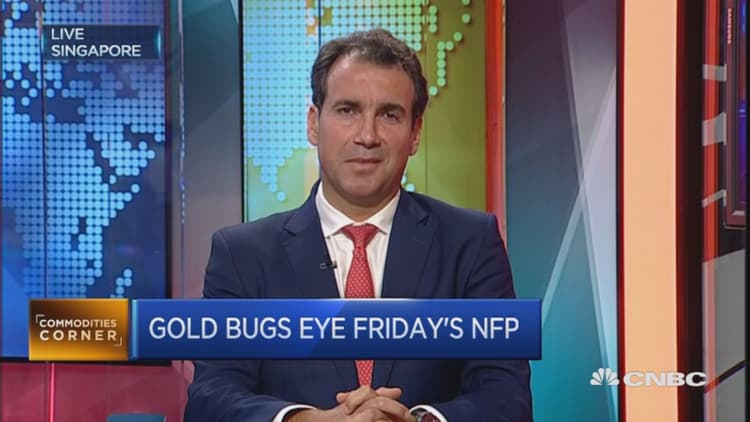Gold steadied on Friday pending U.S. non-farm payrolls data but remained on track to slide nearly 5 percent this week after a jump in the dollar to 2-1/2 month highs pushed the metal through key chart levels.
A crash in the pound sent gold priced in sterling to a three-month high.

Spot gold was down 0.3 percent at $1,253.72 an ounce, little changed from $1,254.22 late on Thursday, while U.S. gold futures for December delivery settled down 1.1 percent at $1,251.90 an ounce. Gold has fallen for the last eight sessions in a row.
The dollar index has posted its biggest weekly rise since November this week after upbeat U.S. jobs and manufacturing data reinforced expectations the Federal Reserve would lift interest rates this year.
That pressured gold, and its downward move accelerated as it slipped through $1,300 an ounce, which has underpinned prices since Britain's vote to leave the European Union in June.
"The stabilization we see now is because players don't want to push it further ahead of the U.S. employment report," Georgette Boele, an analyst at ABN Amro, told the Reuters Global Gold Forum. "If it comes in strong and Fed speakers are hawkish the move will be restarted."
Gold is highly sensitive to rising U.S. interest rates, which increase the opportunity cost of holding non-yielding bullion, while boosting the dollar, in which it is priced.
Traders are awaiting non-farm payrolls data for September at 1230 GMT for clues on the next direction of trade. The data is considered a litmus test of the strength of the U.S. economy.

The employment report is expected to show payrolls rose by 175,000 jobs last month, according to economists polled by Reuters. A strong report would increase bets that the U.S. central bank is gearing up to raise interest rates in December.
"Any number above 190,000 will likely be bearish for gold as it should send the dollar up and almost certainly usher in a year-end rate hike," INTL FCStone said in a note.
Outperforming spot, sterling-denominated gold was at 1,012.98 pounds an ounce, up 1.9 percent, having earlier peaked at 1,059.06 pounds an ounce, its highest since mid July.
The pound plunged to a 31-year low in a matter of minutes overnight in what traders said was a "flash crash" driven by computer-initiated sell orders, against a backdrop of growing anxiety that Britain will undergo a "hard" exit from the European Union.
Silver was up 0.2 percent at $17.31 an ounce. It is down nearly 10 percent this week, its biggest weekly drop since April 2013. Platinum was down 0.1 percent at $962.24, while palladium was 0.2 percent higher at $668.90.

